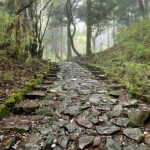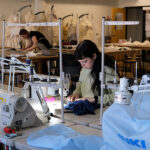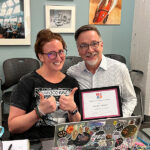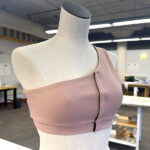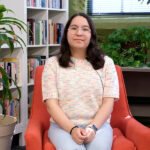Learning to See.
- attended Nicolet High School, Glendale, WI
- graduated 2004, BFA Photography
- currently a freelance photographer: www.martinwasserman.com

Martin Wasserman
“MIAD taught me how to see the world differently, it taught me the ins-and-outs of the art and design world, and it also taught me to respect myself as a photographer and artist.”
Q. What did you think you wanted to be when you grew up?
A. When I was a kid, I used to see myself as a scientist when I’d be older. I used to read encyclopedias for fun, and would explore the small world around me whenever I could. Growing into a teenager, I realized I enjoyed people: being around them, working with them, and helping them. I was determined to be a doctor, because this would satisfy my people and scientific leanings. I had never even considered being an artist professionally.
Q. What is your first memorable experience with art and design?
A. My father’s side of the family is filled designers and artists, so from a very early age, I had art all around me. My grandfather was an industrial designer in the 1950’s. I remember my father’s mother used to take my sister and I to the Milwaukee Art Museum often, and I remember loving to go there. I grew up with art, and it’s always been a large part of my life.

Wasserman’s concentration for his senior thesis project at MIAD focused on photographing Milwaukee-area Holocaust survivors, a project for which he was featured on National Public Radio, as well as in the local media.
Q. How did your MIAD education affect where you are today?
A. MIAD helped me put some resume-worthy items under my belt, so to speak. I spent the first semester of my junior year doing the New York Studio Program, where I interned at the Polaroid 20×24 Studio, meeting a variety of famous artists and photographers, including Chuck Close, Joyce Tenneson,and Andreas Serrano to name a few. Between my junior and senior year, through an internship project coordinated by MIAD, I served as David Turnley’s assistant on the Northeast Harley-Davidson Ride Home. I was among the Best in Show for my senior thesis portraits of local Holocaust survivors, and was featured on NPR as well as the local news because of that project. All of these things were made possible because of MIAD, to which I am grateful. Since graduating, I’ve been published a number of times by the local press, as well as the recruitment catalog for the Milwaukee Jewish Day School.
Q. What was the most valuable thing you learned at MIAD?
A. MIAD taught me how to see the world differently, it taught me the ins-and-outs of the art and design world, and it also taught me to respect myself as a photographer and artist. Of course I learned far more than this. But those three things, taken as a whole, definitely were the most valuable things my MIAD education taught me.


Q. What’s the one thing you would tell a high school student who is considering attending MIAD now that you’ve experienced life after graduation?
A. As far as what I’d tell a high school student, I would say this: MIAD is an amazing school, but you have to have the drive and ambition to want to make the most of it. It’s not like a normal college or university in that regard. You have to want to go above and beyond the norm if you want to get the most out of MIAD. You have to go in there with the mindset that you’re going to strive to be great. And if you have that drive, that ambition, you will find that MIAD prepared you for the sometimes harsh world of design and fine art (which is the reality) after graduation.
Q. If you had to sum up your job, what would it be?
A. I am currently a freelance photographer. I have done weddings, some event coverage, some freelance magazine covers, as well as promotional material for non-profit organizations. I would like to continue down this road, maybe opening my own portrait studio sometime in the near future.
Q. Please define how you saw your major while you were in school, and how that definition has changed over the years.
A. When I first declared my major as Photography, I saw it as a mixture of fine art and design. Personally, I never thought I’d have a career as a fine art photographer. I’d always wanted to go into commercial work, which is something I’ve accomplished (at least a little bit!) so far. I could’ve gone to a non-art school for the type of photography I’m doing now. But I made a conscious choice, and I stand by it to this date. MIAD helped me to understand and see differently, a concept that still shapes everything I do, from doing photography to merely walking down the street. I’m a believer in art school, you could say.


